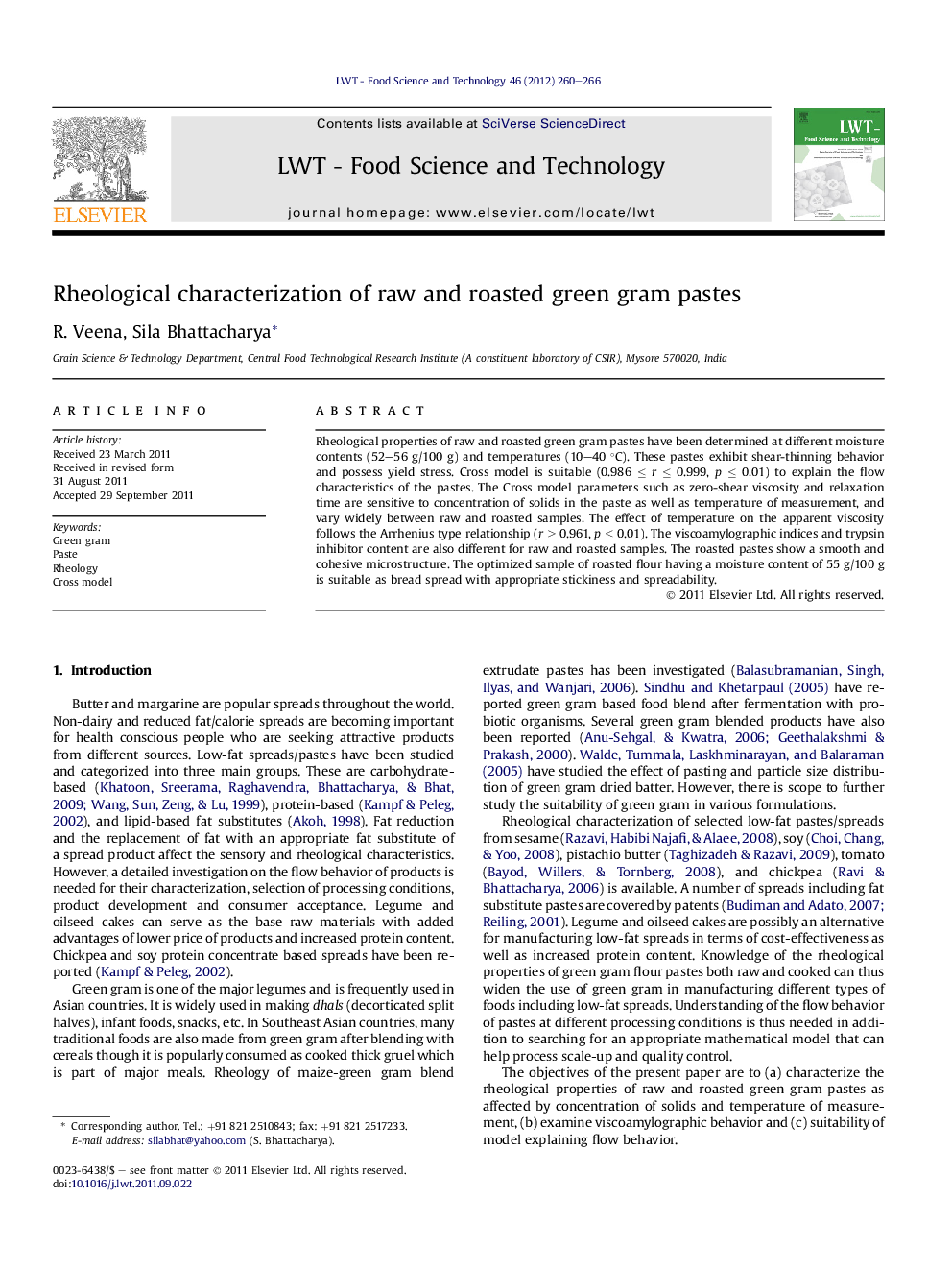| Article ID | Journal | Published Year | Pages | File Type |
|---|---|---|---|---|
| 6405426 | LWT - Food Science and Technology | 2012 | 7 Pages |
Rheological properties of raw and roasted green gram pastes have been determined at different moisture contents (52-56 g/100 g) and temperatures (10-40 °C). These pastes exhibit shear-thinning behavior and possess yield stress. Cross model is suitable (0.986 â¤Â r â¤Â 0.999, p â¤Â 0.01) to explain the flow characteristics of the pastes. The Cross model parameters such as zero-shear viscosity and relaxation time are sensitive to concentration of solids in the paste as well as temperature of measurement, and vary widely between raw and roasted samples. The effect of temperature on the apparent viscosity follows the Arrhenius type relationship (r â¥Â 0.961, p â¤Â 0.01). The viscoamylographic indices and trypsin inhibitor content are also different for raw and roasted samples. The roasted pastes show a smooth and cohesive microstructure. The optimized sample of roasted flour having a moisture content of 55 g/100 g is suitable as bread spread with appropriate stickiness and spreadability.
⺠Raw and roasted green gram pastes exhibit shear-thinning behavior and yield stress. ⺠Cross model is suitable to explain the flow characteristics of green gram pastes. ⺠The roasted pastes show a smooth and cohesive microstructure. ⺠Roasted flour with a moisture content of 55 g/100 g is suitable as bread spread.
